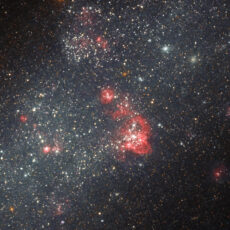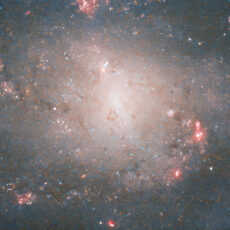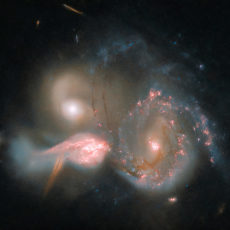
NASA / ESA’s Hubble Space Telescope recently observed a young planet’s hydrogen atmosphere getting blasted by stellar wind as well as ultraviolet radiation from red dwarf star Au Microscopii. What surprised astronomers the most was that the planet did not appear to be losing any material at all, but an orbit observed with Hubble 1.5-years later showed clear signs of atmospheric loss.
AU Microscopii (AU Mic) is located 32 light-years from Earth and hosts one of the youngest planetary systems observed yet. The star is less than 100 million years old and its innermost planet, AU Mic b, has an orbital period of 8.46 days. However, the bloated, gaseous planet is just 6 million miles from the star and measures about four times Earth’s diameter.
- LEGO NASA Space Set - This adult LEGO set features the Space Shuttle Discovery and the Hubble Space Telescope from NASA’s 1990 STS-31 mission,...
- Solar System Exploration - Unlock the mysteries of our solar system with this engaging 2,354-piece project, packed with authentic details and...
- Shuttle Features Galore - The space shuttle model has an opening payload bay, retractable landing gear, opening cockpit, moving elevons, space arm,...
Red dwarfs like AU Microscopii are the most abundant stars in our Milky Way galaxy. They therefore should host the majority of planets in our galaxy. But can planets orbiting red dwarf stars like AU Mic b be hospitable to life? A key challenge is that young red dwarfs have ferocious stellar flares blasting out withering radiation. This period of high activity lasts a lot longer than that of stars like our Sun,” said NASA.







